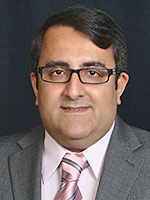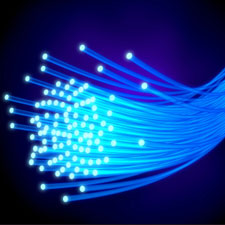Recent News
NQVL Design Phase Award
October 1, 2025
CHTM Joins NSF's NQVL Pilot Projects
August 9, 2024
OSE PHD, Dr. Xuefeng Li - Wins The Outstanding Interdisciplinary Graduate Programs Award
May 10, 2024
Dr. Ali Rastegari - 2024 OSE Best Dissertation Award Winner
May 10, 2024
News Archives
Extremely Broad Transmission Bandwidth Hollow Core Optical Fiber
October 28, 2016 - Republished from STC.UNM

Arash Mafi
Arash Mafi, Interim Director of CHTM and UNM Physics & Astronomy Associate Professor, together with Behnam Abaie, Research Assistant at CHTM, have devised designs for hollow core fibers based on a novel light confinement mechanism.
Abstract:
The objective of this technology is to significantly expand the transmission bandwidth compared to conventional hollow core photonic crystal fibers (HC-PCF). Also, these fibers will reduce bend sensitivity while introducing a potentially easier and more reproducible fabrication process compared to current highly complex manufacturing techniques.
The advantages of this technology include:
- Supports a broad wavelength range
- Easier and reproducible fabrication process
- Reduces bend sensitivity
- Applications in telecommunications, pulse compression/shaping, sensors, spectroscopy, nonlinear devices, lasers, etc.
Technology

A hollow core optical fiber guides light within a hollow region where only a very small portion of optical power propagates inside the solid fiber material (typically a glass). This helps to minimize nonlinear effects and provides a significantly higher damage threshold. Light guiding within a hollow core is not possible with conventional optical fiber designs which work based on total internal reflection. Other different guiding mechanisms can be used, based on a photonic bandgap, such as in a photonic crystal fiber with a certain structure. The main issue with a photonic crystal fiber is the limited wavelength range in which the photonic bandgap guiding works. There is a need for advanced hollow core fiber designs that provide increased wavelength range and easier reproducibility.
The Science & Technology Corporation at UNM, STC, has filed intellectual property on this exciting new technology and is currently exploring commercialization options.


